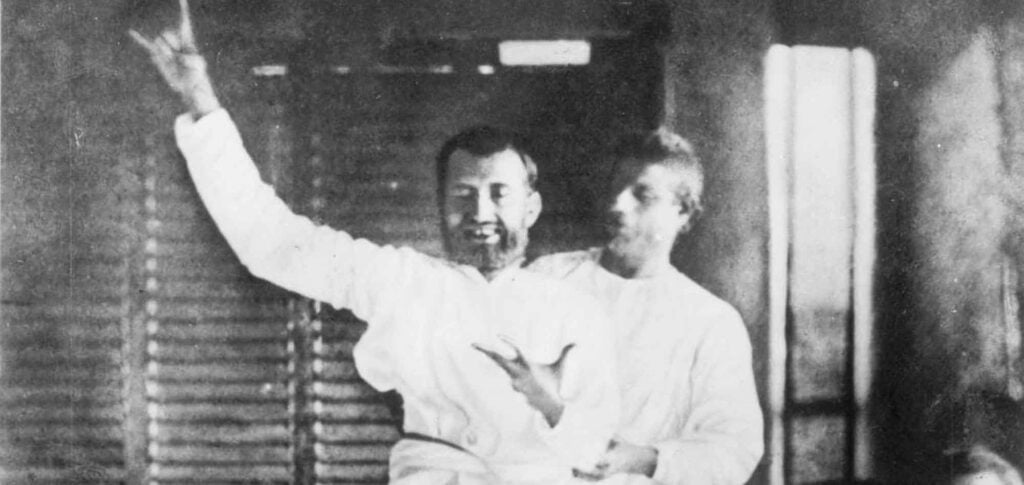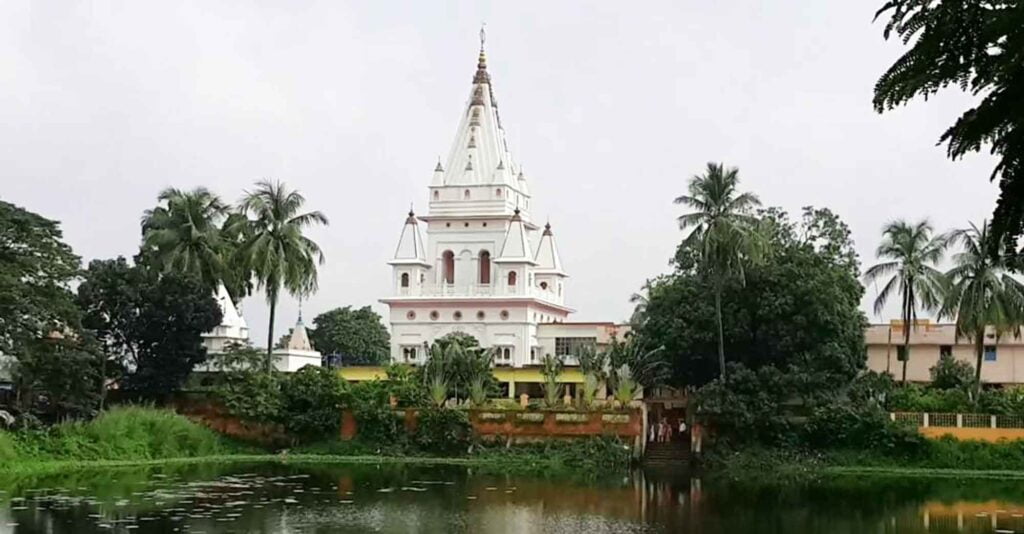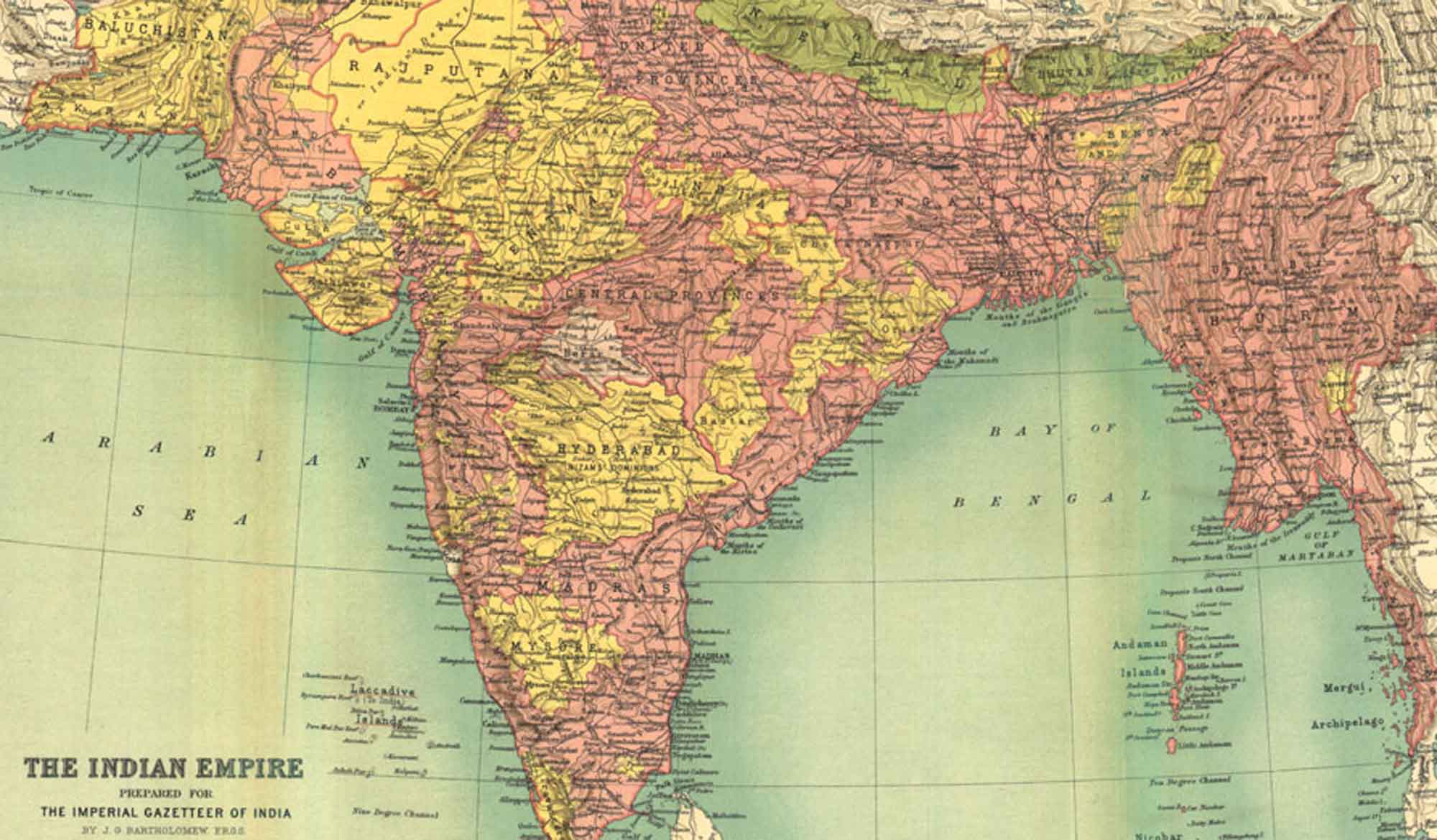Overview
‘Yugāvatāra’ was first published in Sajjana Toṣaṇī, Vol.8 issue 7 in 1896. In this review of the book ‘Yugavatāra’ by Narendranātha Mukhopādhyāya, Bhaktivinoda Ṭhākura gives suggestions on the improvement of the text and then cites a passage from the work describing the destruction of Bengal by the Muslim fanatic, Bakhtiyar Khilji.
(translated by Swami B.V. Giri)
The great devotee Śrīyuta Narendranātha Mukhopādhyāya Mahāśaya has written this book which is complete with four hundred and thirty four pages. The language is simple and touches the heart. I think that Bengali ladies will now be able to read about the character of Śrī Gaurāṅga without any effort. The author has given authentic statements throughout. In order to avoid giving trouble to the minds of the followers of various doctrines, the author has taken special care and discussed controversial issues in a concise manner. The book does not have an index which will disappoint the reader. Another thing is that the author has collected the words of Caitanya from various books, then he avoided giving individual references. I cannot say why he gave us that trouble. Those who describe the character of Caitanya by only following Caitanya–caritāmṛta leave aside Caitanya–bhāgavata or Caitanya–maṅgala and other recent works. But that is not the purpose of Narendra Bābu. He cannot write a complete description of Caitanya by omitting details from other texts. We hope he will fill this void at the time of the second printing. In this regard, it is our opinion that it would be good if whatever great devotees such as Śrī Kṛṣṇa Dāsa Kavirāja, Śrī Vṛndāvana Dāsa Ṭhākura, Śrī Locana Dāsa Thākura, Śrī Murāri Gupta etc. have written in relation to Śrī Gaurāṅga, after due consideration of its time period, could be described in one book in the appropriate places. If there are some legends that are not against the Vaiṣṇava narrative, then it is not bad to collect them. If any description is contrary to those of the Vaiṣṇava writers, then the Vaiṣnavas will not include them in the biography of Caitanya. In this regard, the book remains a little incomplete.
Although incomplete in that sense, the book Yugāvatāra is excellent for Vaiṣṇavas. The author wholeheartedly describes the subjects. Tears well up in one’s eyes as you read the book. The author begins the book thus:
“Mahāprabhu Śrī Gaurāṅga descended at Nadīyā or the town of Navadvīpa, at the confluence of the Gaṅgā and the Jalaṅgī. What was the internal condition of Bengal at that time must be briefly described. Long before the advent of Śrī Gaurāṇga, the province of Bengal, after the tyranny and persecution of the Muslim rulers, was in a deplorable state. Hindu prestige was almost extinct. The Hindu holy places were entirely devoid of any dignity, to a great extent Hindu customs had been influenced by the Yavanas, Hindu dress and ornaments were basically Yavana, and any news amongst the Hindu communities was mixed with many Yavana words. Having been under the rule of the Yavanas for a long time, the entire Bengal became influenced by them.
In the Christian year 1204, Bakhtiyar Khilji tactfully dethroned the ruler of Bengal, Lakṣmaṇeya Sena, and ascended the throne of Bengal himself. Lakṣmaṇeya Sena was the great grandson of Ballāl Sena and the grandson of Lakṣmaṇa Sena. Ballāl Sena was the king in the last half of the Eleventh Century of the Christian Era. During his time Bengal was in a state of special development. Later, when his son Lakṣmaṇa Sena ruled, the prosperity of Bengal increased even more. Lakṣmaṇa Sena held the title of rājyādhirāja (king of kings) and ruled the kingdom with uninterrupted influence. Lakṣmaṇeya was born in 1124 of the Christian Era, and his was the last Hindu kingdom of Bengal. When Bakhtiyar Khilji invaded Bengal by destroying the province of Bihar, Lakṣmaṇeya was very old. In his old age he was deprived of the happiness of a kingdom by the tenacious rise of Bakhtiyar. Lakṣmaṇeya did not fight with Bakhtiyar. Upon hearing the news of Bakhtiyar’s arrival, he left the capital and fled with his family.
Bengal had three capitals during the reign of the Sen dynasty. The old capital was Vikrampura, the second capital was Gauḍa-nagara, and the third was Navadvīpa. Whenever the kings wanted to stay anywhere, they would stay in those capitals from time to time. Lakṣmaṇeya spent the remainder of his life in Navadvīpa. During his time, there was a great improvement in education in Navadvīpa. He used to have assemblies where paṇḍitas would discuss the various śāstra. The brāhmaṇa paṇḍitas also used to continue their lives happily under him. Bakhtiyar axed the root of all this happiness. Bakhtiyar looked very ugly, and his actions took the same shape. Since Bakhtiyar’s conquest of Bengal, simply hearing his name created fear in the minds of the people. When they wanted to scare the boys and girls, people would use to name of Bakhtiyar and this name was mixed with so much dread that the children would be stunned when they heard it. From this terrible form of Bakhtiyar, a darkness fell on the bright chest of Bengal which never rose again. From this time onward, the condition of the Hindus of Bengal began to deteriorate in all respects. The ruler was impious, so Hindu religious life became drier day by day. Finally, in such a condition, all that was left of it was in name only.”
This type of composition has been adopted everywhere. What else is there in the book that has become the treasure of our hearts? The appendix to this book was written by our old friend Śrīyuta Kālīmaya Ghaṭak Mahāśaya. The appendix is as healthy as a piece of sugar candy. There is no doubt that those who read it carefully will find special pleasure.













